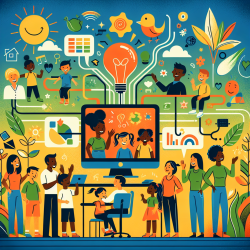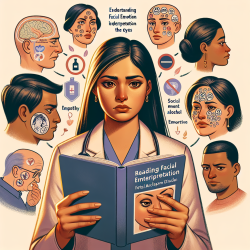Introduction
In the quest to address global challenges such as poverty and inequities, behavioral science offers promising solutions. The research article "Behavioral Interventions Contributing to Reducing Poverty and Inequities" provides a comprehensive framework for understanding how behavioral interventions can be applied at various levels to tackle these pressing issues. By leveraging data-driven approaches, practitioners can enhance their skills and contribute to better outcomes for communities and children.
Understanding the Framework
The research emphasizes the importance of addressing poverty and inequities through behavioral interventions aligned with the United Nations Sustainable Development Goals (SDGs). These include ending poverty (SDG 1), ensuring good health and well-being (SDG 3), and reducing inequality (SDG 10). The interventions are categorized into individual, relationship, community, and societal levels, highlighting the diversity of issues and methods involved.
Individual and Relationship Interventions
Behavioral interventions at the individual and relationship levels focus on modifying behaviors and conditions that contribute to poverty and inequities. For example, the "therapeutic workplace" model provides employment opportunities to individuals with a history of substance use, contingent on abstinence. This approach not only promotes sobriety but also enhances financial stability.
Another significant intervention is the Programa Bolsa Família in Brazil, which provides conditional cash transfers to families. By meeting specific health and education requirements, families receive financial support, leading to improved school attendance and reduced child labor.
Community and Societal Interventions
Community-level interventions often involve collaborative efforts to address broader social determinants of health. For instance, community coalitions work to prevent substance abuse and promote healthy youth development. These interventions are supported by resources like the Community Tool Box, which provides tools for building capacity in community health and development.
At the societal level, advocacy and policy changes are crucial. Behavioral scientists engage in strategic advocacy to influence policy and systems change, addressing chronic poverty and social exclusion. By forming partnerships with advocacy groups and those most affected, they can exert influence on decision-makers to bring about necessary changes.
Challenges and Opportunities
While behavioral interventions show promise, several challenges remain. Many interventions focus on individual behavior change rather than systemic changes, which can be more impactful. Additionally, interventions need to be designed with greater strength and reach to address broader socio-ecological levels.
Collaborative partnerships provide an opportunity for behavioral scientists and practitioners to work together with public health and other disciplines. By combining scientific methods with experiential knowledge, they can create conditions for health and well-being for all.
Conclusion
The research highlights the potential of behavioral interventions to address poverty and inequities. By focusing on data-driven strategies and collaborative efforts, practitioners can improve outcomes for communities and children. For those interested in delving deeper into the research, the original paper offers valuable insights and illustrative examples.
To read the original research paper, please follow this link: Behavioral Interventions Contributing to Reducing Poverty and Inequities.










